About
European Frog-bit (EFB; Hydrocharis morsus-rane L.) is an invasive free-floating aquatic plant of growing concern due to its continued spread and potential negative impacts on Great Lakes coastal wetlands and inland waters. The EFB Collaborative was established in fall of 2018 to improve coordination and collaboration among stakeholders and build consensus on next steps for EFB management and research in Michigan. EFB detections in additional Great Lakes jurisdictions including Ohio, Pennsylvania, New York, and Ontario resulted in state, provincial, and tribal interest to expand the EFB Collaborative beyond Michigan to the entire Great Lakes basin. The Great Lakes Commission stepped in as the neutral backbone organization to enhance and expand the Collaborative in fall 2022.
The European Frog-bit Collaborative aims to improve interjurisdictional coordination and collaboration among stakeholders, establish communication networks for the EFB community, and build consensus on next steps for EFB management and research. A broad membership base of states, provinces, Tribal, and other entities and a well-organized communication network facilitates the exchange of information between scientists, managers and stakeholders, and provides ongoing guidance and feedback within an adaptive management framework.
Three work groups (Delimitation, Management Assessment, and Education/Outreach) are making progress toward achieving the Collaborative objectives using five strategies: delimit high-risk EFB infestations; assess ongoing EFB eradication and control efforts; educate recreational and professional stakeholders; address critical information needs for effective EFB management; and contain existing high-risk infestations, mitigate impacts in invaded high-value sites, and protect uninvaded high-value sites.
The Collaborative hosts three GIS-based tools which provide a standardized approach for EFB monitoring and field data collection:
- The prioritization tool uses habitat and physical features to help identify areas most susceptible to an EFB invasion
- The delimitation app provides a standardized way to monitor for EFB using an ArcGIS Field Maps platform
- The Standard Treatment Impact Monitoring Protocol (STIMP) establishes a consistent methodology for evaluating the impact that selected treatments have on European frog-bit
All three tools are available for use to anyone monitoring or managing for EFB within the Great Lakes region. Please contact efb@glc.org for access or additional information.
Meet the
Collaborative
→
European Frog-bit
Facts
→
Contact
Us
→
Resources & Publications
Twitter Image: Protect Habitat
European Frog-bit Collaborative
Twitter Image: Preserve Habitat
European Frog-bit Collaborative
Standard Treatment Impact Monitoring Protocol
European Frog-bit Collaborative
